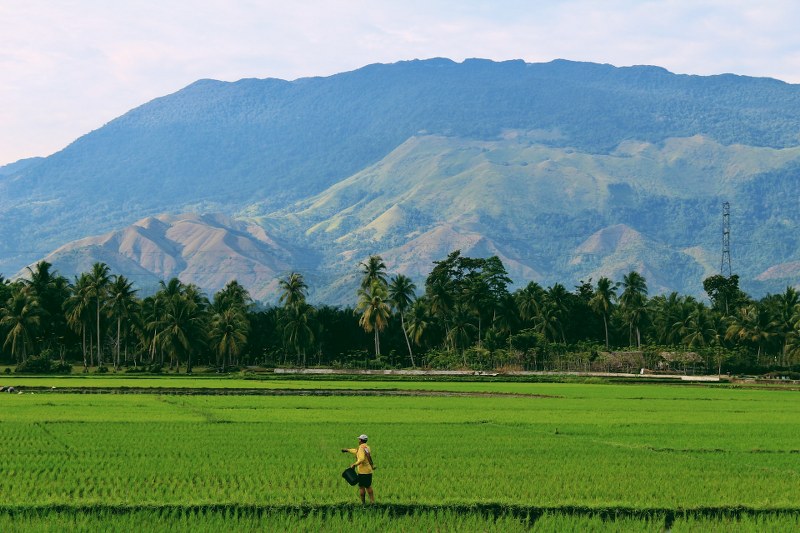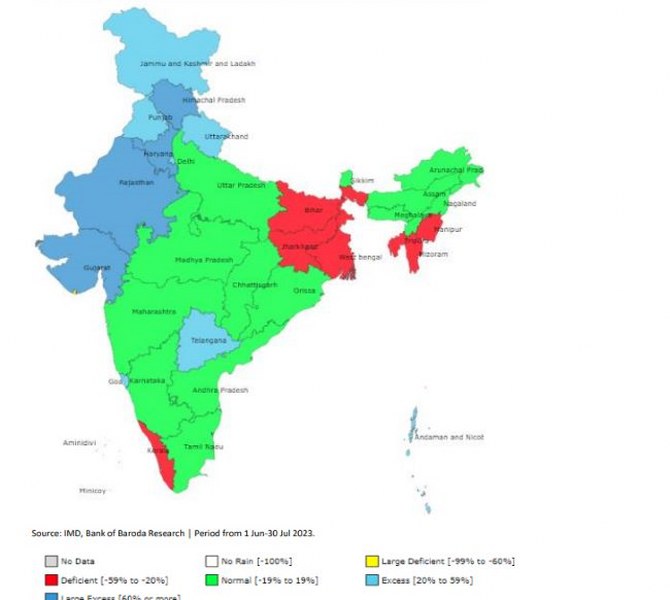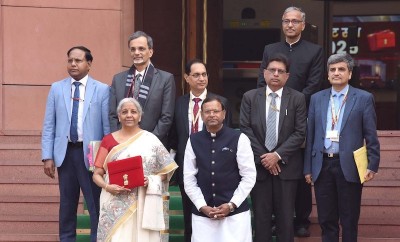 Kharif
Kharif
Lower Kharif sowing due to erratic rainfall likely to push inflation up in near term: Report
New Delhi: Lower rainfall in the eastern and northeastern region has resulted in much lower Kharif sowing this year which is expected to translate into higher inflation in the near term, according to an economic report by Bank of Baroda.
Specifically, the sowing of pulses has been much lower compared with last year, intensifying the impact on inflation, it said.
The intensity of rainfall has pushed the South-West monsoon higher at 6% (above LPA) till 30 Jul 2023. IMD expects El Nino conditions will develop in the middle of the monsoon with global models projecting a possible peak through Nov’23-Jan’24.
Moreover, in order to gauge the impact on Kharif sowing, region-wise distribution of rainfall needs to be tracked carefully, the report said.
Where does Kharif sowing stand?
As of 28 Jul 2023, the overall kharif sown area has declined by 0.3% (was up by 1.2% in the previous week) compared with last year. Rice sowing has improved by 1.9% for the same period. Sown areas of oilseeds and sugarcane remain higher this year.
Marginal improvement in the acreage of Bajra and Maize has pushed the overall sown area of coarse cereals higher. However, pulses acreage has declined by double digits (-11.3%) compared with last year.
Both Arhar and Urad, registered a dip of (-) 16% and (-) 14.1% respectively for the same period. Cotton sowing (-1%) too remains much lower than last year.
Monsoon Update
 Distribution pattern of South-West Monsoon
Distribution pattern of South-West Monsoon
From Jun 1, 2023, to Jul 30, 2023, South West Monsoon is 6% above LPA compared with last year.
The northern and western parts of the country has received excessive rainfall. These include states such as Rajasthan, Punjab, Haryana, Gujarat, Himachal Pradesh and Jammu & Kashmir.
Most of the region in the Deccan plateau with the exception of Telangana and Kerala have received normal rainfall.
Even some regions in the North Eastern region including Meghalaya, Arunachal Pradesh, Assam and Meghalaya continue to receive normal rainfall.
On the other hand, states including Manipur, Mizoram, West Bengal, Bihar and Jharkhand have been on the receiving end of the lower rainfall.
IMD has projected that based on the global model, El Nino conditions are likely to develop in the middle of the season and is expected to continue through Q1CY24.
IMD expects fairly widespread rainfall in most parts of North West, Central and eastern region.
However, it expects scattered rainfall in other parts of the country.
Out of 36 subdivisions, over 6 subdivisions have received lower rainfall (8 in the previous week) for a cumulative period ranging from June 1 to July 30.
Amongst states, there are 7 states (6 states-last week) that remain in the deficient zone during this period.
In terms of storage, the reservoir level as a % of total capacity stands at 48% as on 27 Jul 2023.
Total live storage available in 146 reservoirs stands at 85% of storage of last year and 111% of average storage for the last 10 years.
Within regions, the Northern region continues to have the highest reservoir levels (76% against 40% last year) and Central (53% versus 52% last year), and Eastern region (26% versus 25%). On the other hand, the Western (56% versus 67%) and Southern regions (37% versus 73%) have lower reservoir levels compared with last year.
Support Our Journalism
We cannot do without you.. your contribution supports unbiased journalism
IBNS is not driven by any ism- not wokeism, not racism, not skewed secularism, not hyper right-wing or left liberal ideals, nor by any hardline religious beliefs or hyper nationalism. We want to serve you good old objective news, as they are. We do not judge or preach. We let people decide for themselves. We only try to present factual and well-sourced news.







